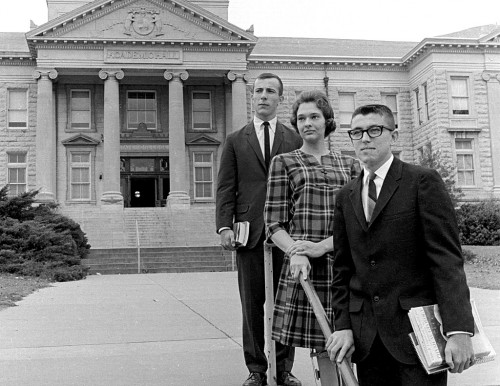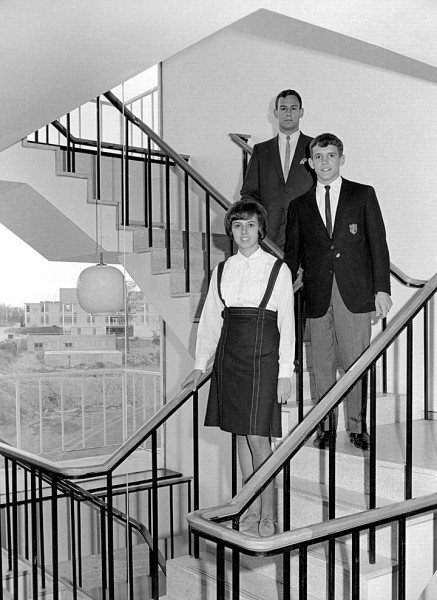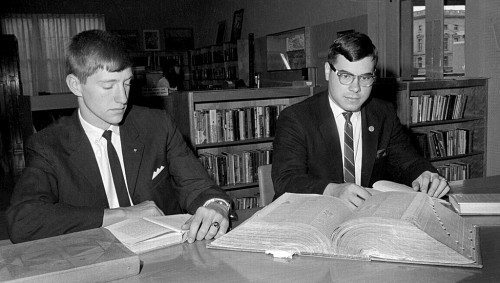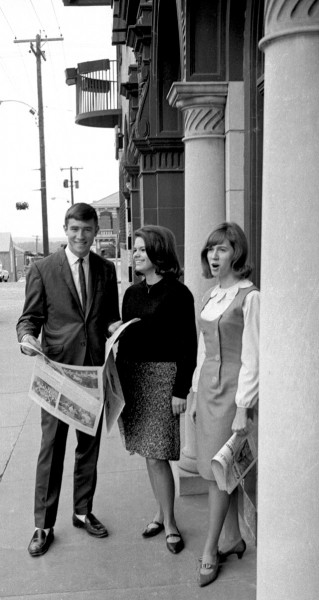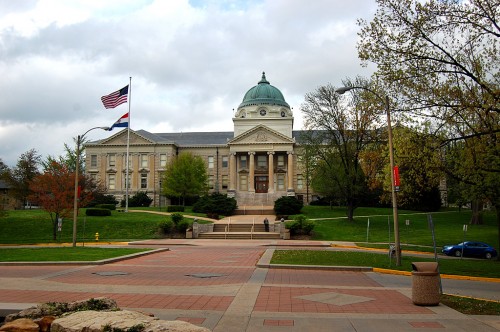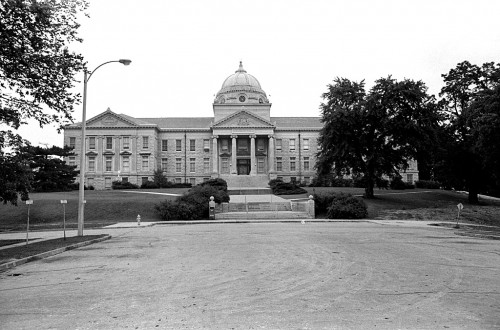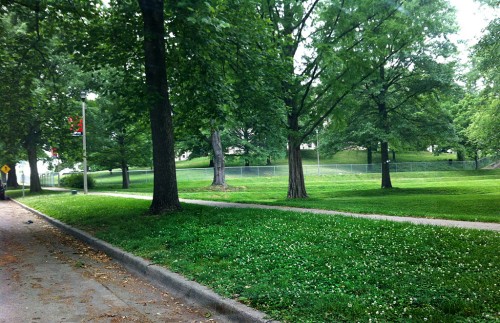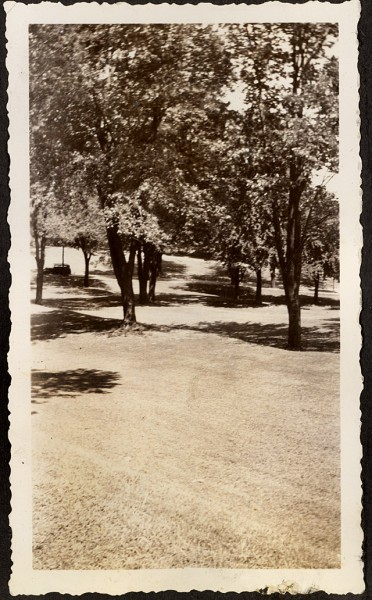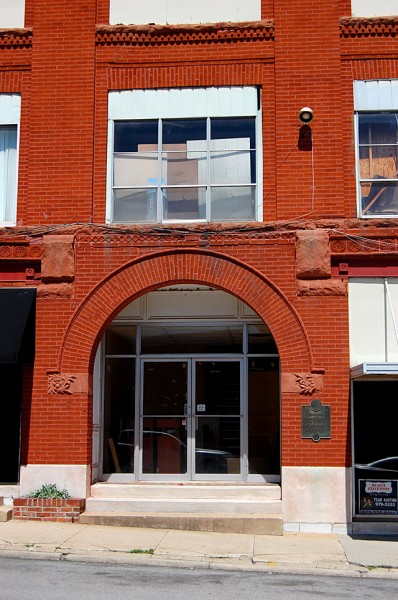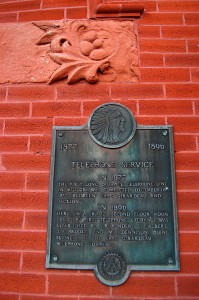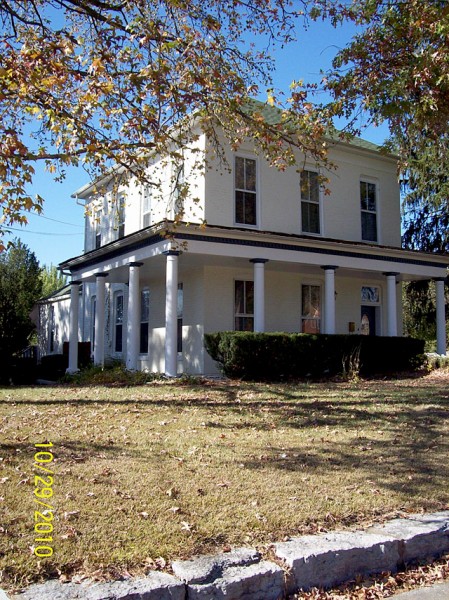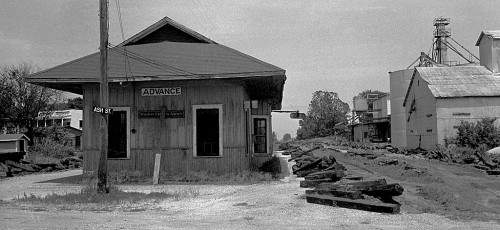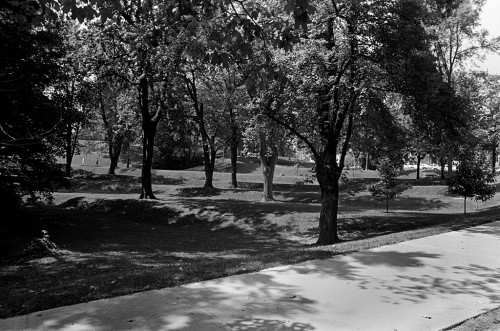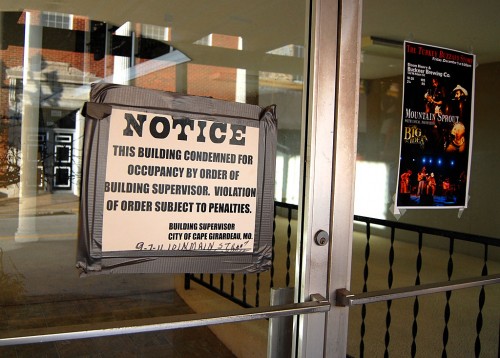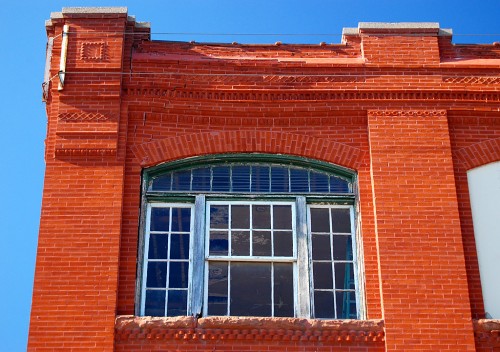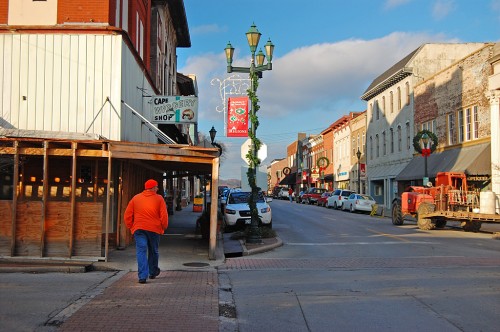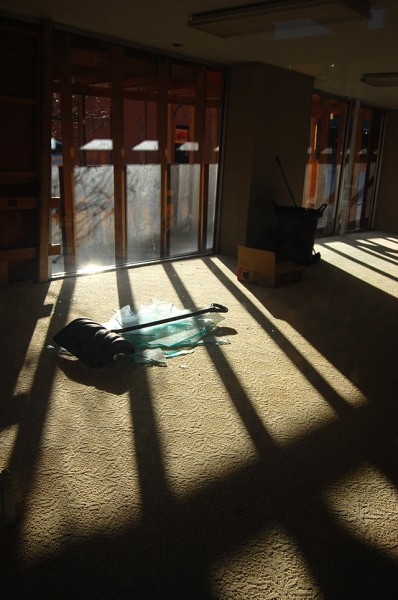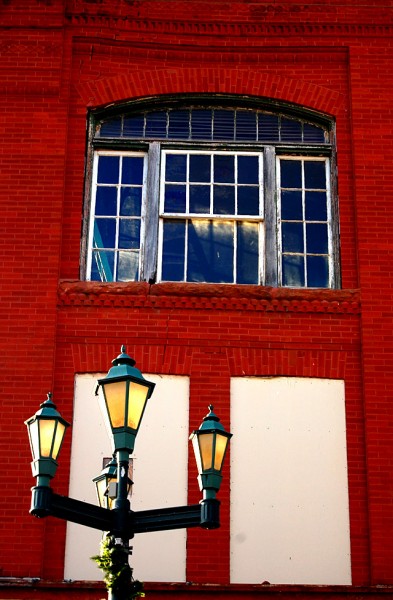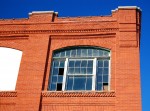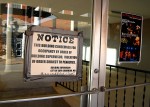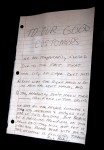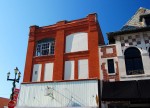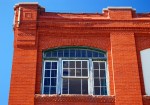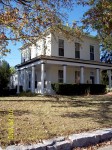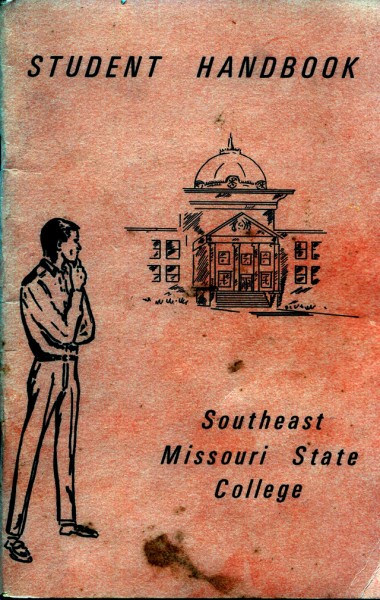 You don’t hear the phrase “in loco parentis” much these days. It’s Latin for “in the place of a parent” and refers to the legal responsibility of a person or organization to take on some of the functions and responsibilities of a parent. It allowed for institutions such as colleges and schools to act in the “best interests” of the students as they saw fit.
You don’t hear the phrase “in loco parentis” much these days. It’s Latin for “in the place of a parent” and refers to the legal responsibility of a person or organization to take on some of the functions and responsibilities of a parent. It allowed for institutions such as colleges and schools to act in the “best interests” of the students as they saw fit.
I didn’t realize just how loco the parentis Southeast Missouri State College was until I ran across my old SEMO Student Handbook that I must have been given when I was a freshman. Women going to school in this century won’t believe the double standard restrictions women had placed on them until the 1970s and beyond.
Campus run like Bootheel high school
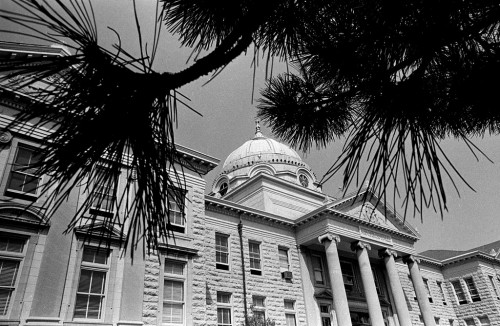 President Mark Scully ruled the college campus just like a Bootheel high school. [In fairness to Dr. Scully, his obit in The Missourian had nice things to say about him when he died in 2002.]
President Mark Scully ruled the college campus just like a Bootheel high school. [In fairness to Dr. Scully, his obit in The Missourian had nice things to say about him when he died in 2002.]
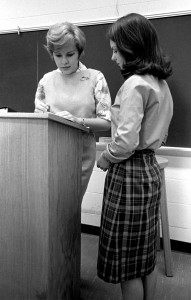 Dress Code for Men: Dress for men is slacks and sport shirt or sweater. Shorts may be worn in warmer weather to classes. Shirt tails should never be worn out, and because of sanitation reasons, socks should always be worn with shoes. Thongs are not considered appropriate for any occasion other than dorm wear. For concerts, plays and the like, a suit and/or sports coat is called for. [I’m pretty sure the word “thong” had a different meaning in 1966. Dr. Scully would go out of his way to enforce the shirttail rule personally.]
Dress Code for Men: Dress for men is slacks and sport shirt or sweater. Shorts may be worn in warmer weather to classes. Shirt tails should never be worn out, and because of sanitation reasons, socks should always be worn with shoes. Thongs are not considered appropriate for any occasion other than dorm wear. For concerts, plays and the like, a suit and/or sports coat is called for. [I’m pretty sure the word “thong” had a different meaning in 1966. Dr. Scully would go out of his way to enforce the shirttail rule personally.]
Dress Code for Women: Skirts and blouses and/or dresses are the appropriate dress for class wear. Girls may dress informally for trips into the Cape Girardeau community and on campus after 4:00 p.m. Informal wear (slacks or shorts) may not be worn in any instructional building or Kent Library. Dress in the residence halls depends on each hall’s rules. Also, teas and concerts and plays call for a suit or party dress with heels and hose.
[Notice that men can wear shorts to class, but women may not wear slacks or shorts in any instructional BUILDING. Guys DID have to wear socks for “sanitation reasons.”]
Association of Women Students
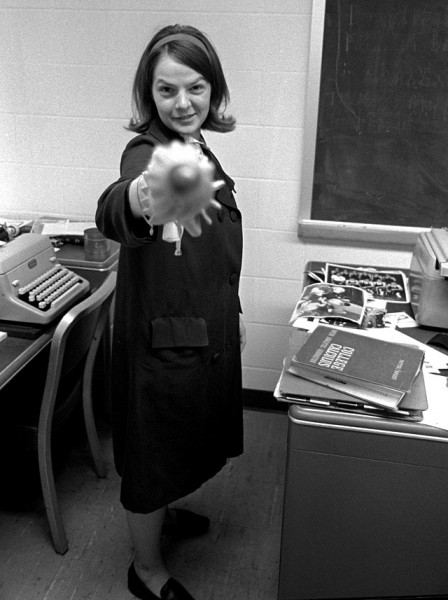 Women students DID get one perk male students didn’t. They were all automatically members of the Association of Women Students.
Women students DID get one perk male students didn’t. They were all automatically members of the Association of Women Students.
Membership of the A.W.S. includes every woman student enrolled at SEMO State. Each year this organization carries our several projects designed to aid the women of the campus, and among these projects are a fashion skit during the Orientation which advises the freshman coed on the various types of clothes to wear to college activities, a fall tea for all women students, and a Twirp Week. [The fall tea, Wife Lila informed me, was NOT optional.]
Twirp Week: The Woman Is Required to Pay. Every year, under the sponsorship of the Association of Women Students, one week is designated as Twirp Week. The woman has the opportunity to ask the man of her choice for dates, and assumes the responsibility for providing money and transportation. She must also perform common courtesies such as opening doors, and helping her date with his coat.
Life as a co-ed
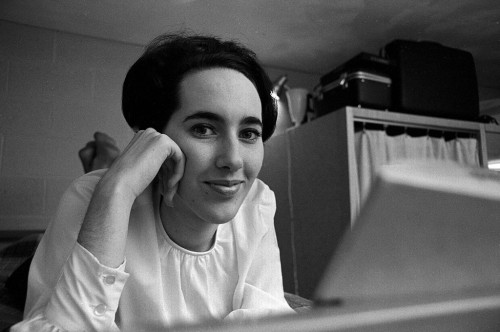 I would occasionally need to go into female housing on assignment. It was kind of exciting to be in the inner sanctum with an escort hollering “MAN ON THE FLOOR!” as you walked along. You envisioned meaningful glances from your subjects.
I would occasionally need to go into female housing on assignment. It was kind of exciting to be in the inner sanctum with an escort hollering “MAN ON THE FLOOR!” as you walked along. You envisioned meaningful glances from your subjects.
Women’s Hours
- 11:00 Sunday and the first night back after a college holiday (night before the first day of classes)
- 10:30 Monday through Thursday
- 1:00 Friday and Saturday
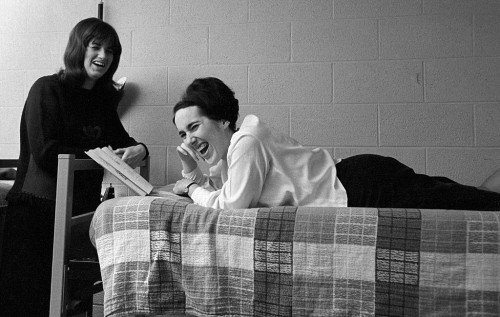
Unfortunately, this was a more typical reaction.
Late Emergencies
If a co-ed returning to her residence is delayed until after hours, she should notify the houseparent or head resident by phone, i.e., babysitting or travel delays. If a phone is not available, come in and ring the doorbell late. Also, if it is necessary for a co-ed to leave her residence before the time it is regularly opened, she should make the necessary arrangements with the person in charge.
Special Permissions
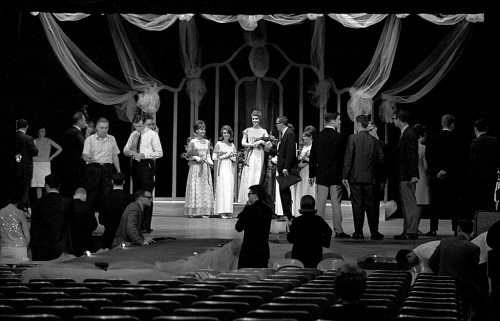 1:30 closing hours for Homecoming and Sagamore Ball. On these special late nights there will be no overnight permissions granted. All co-eds will have 15 minutes after the close of the following events to return to their living units: Plays, concerts, lectures, college sponsored movies, and similar special events that last beyond closing hours. Arrangements should be made in advance with the houseparent or head resident for any college sponsored group activities such as band trips, debates, and conventions which require extra privileges.
1:30 closing hours for Homecoming and Sagamore Ball. On these special late nights there will be no overnight permissions granted. All co-eds will have 15 minutes after the close of the following events to return to their living units: Plays, concerts, lectures, college sponsored movies, and similar special events that last beyond closing hours. Arrangements should be made in advance with the houseparent or head resident for any college sponsored group activities such as band trips, debates, and conventions which require extra privileges.
Sign Outs
Overnights in Cape Girardeau and surrounding towns require the use of special sign out forms in the residence halls. Students who plan to stay overnight should request the form only after the Head Resident has contacted the student’s hostess and learned that the guest is welcome. (Maximum number of times per semester, 4 on-campus and 4 off-campus) Any signouts in excess of the stated maximum will be given only at the discretion of the person in charge…Students on restricted permission from their parents must have a letter from them for each separate absence.
[Women could stay out overnight only if the Head Resident called to make sure is was OK with the student’s “hostess.” I would guess that a “host” would not be appropriate. Parents could have an even tighter lock-down: if the student’s parents had put her on “restricted permission,” the parents had to provide a letter approving each request.]
General Conduct
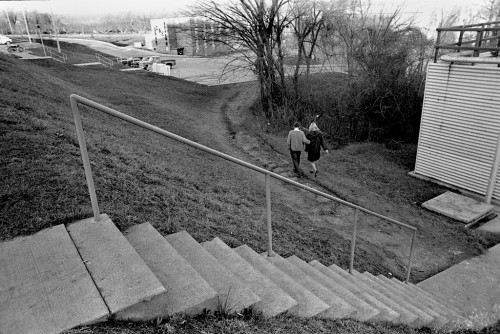 A student at SEMO State is expected to conduct herself in an appropriate manner in her living unit and to conform to standards of propriety at all times. This implies a thoughtful consideration of the welfare and reputation of the school, the individual student, and the community.
A student at SEMO State is expected to conduct herself in an appropriate manner in her living unit and to conform to standards of propriety at all times. This implies a thoughtful consideration of the welfare and reputation of the school, the individual student, and the community.
[Note the word “herself.” Apparently, except for keeping their shirttails tucked in, men didn’t have any restrictions.]
No panty raids
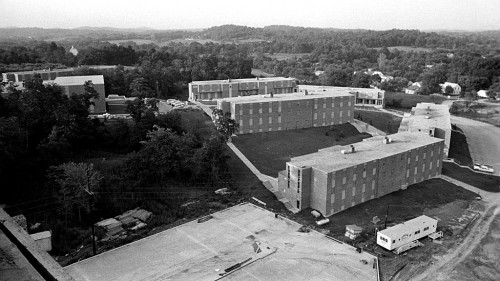 College Property and Buildings – …Any student found guilty of inciting to action or willingly participating in action resulting in destruction of property or in unauthorized group activities, i.e., raids on women’s’ residences, that may or may not be destructive, will be subject to dismissal from the college. [It doesn’t explicitly spell it out, but this is the No Panty Raid rule.]
College Property and Buildings – …Any student found guilty of inciting to action or willingly participating in action resulting in destruction of property or in unauthorized group activities, i.e., raids on women’s’ residences, that may or may not be destructive, will be subject to dismissal from the college. [It doesn’t explicitly spell it out, but this is the No Panty Raid rule.]
Residence Hall rules
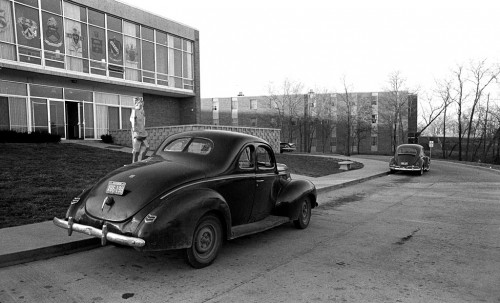 Liquor in the hall – State law and College policy forbid the use or possession of alcoholic beverages on State College property. This includes parking lots and other campus areas, including residence halls. Bottles that have contained or appear to have contained alcoholic beverages are not to be used as room decorations.
Liquor in the hall – State law and College policy forbid the use or possession of alcoholic beverages on State College property. This includes parking lots and other campus areas, including residence halls. Bottles that have contained or appear to have contained alcoholic beverages are not to be used as room decorations.
Gambling – Gambling in every form is prohibited in the residence halls. Mere absence of money from sight does provide loopholes to permit gambling.
Weapons – Possession of any kind of firearms, including war souvenirs that constitute a hazard, is prohibited in residence halls for safety reasons. Hunting equipment should be checked in with the Head Resident.
Pets – For health reasons, dogs, cats, and other pets are not permitted in the residence halls. Goldfish and tropical fish are accepted.
Television – TV’s are not permitted in residence Hall rooms.
[Just for the record, I make enough typos on my own that I usually don’t play grammar policeman. I have to point out the the information in italics came from the student handbook. I’m not responsible for the spelling, consistency in style, or punctuation. An inside page credits Robert Northcutt with the cover design.]

